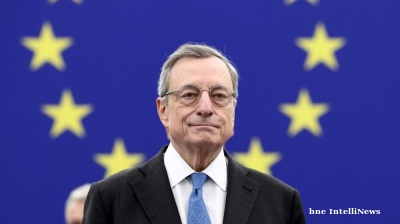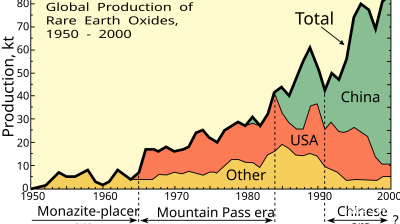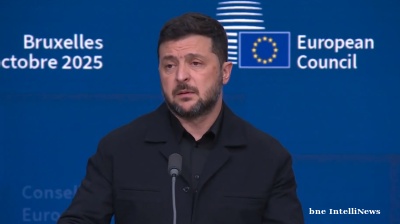Ukraine’s budget is short of UAH500bn ($12bn) this year to finance its planned expenditures and it is not clear how the shortfall will be covered, other than by raising taxes and printing money.
Tax revenues in general have increased as the economy stabilises, according to the head of the Budget Committee, Roksolana Pidlas; the 2024 state budget lacks about UAH400-500bn ($10bn-$12bn), UBN reports.
The 2024 budget calls for $43bn of spending, but international donors have only committed to $38bn, and in the first half have already sent Kyiv $16bn in assistance, of which an increasing share is loans, not grants.
The government has been working hard to improve its finances. An IMF team arrived in Kyiv on July 16 for the fourth review of the Extended Fund Facility, after which it will release the next $2.2bn tranche. But it increasingly looks like the government will be forced to hike taxes – something the government has been loath to do until now.
“Ukraine has now reached the limit of its ability to finance its defence forces. All domestic resources are being allocated to the war effort – including taxes, dividends from state-owned companies, and proceeds from domestic borrowing. But it still isn’t enough,” Ukrayinska Pravda reports.
The banking sector had a record year in 2023 and the government levied a special one-off 50% on profits to bring in extra cash; however, this year that rate will fall back to 25%. According to the Tax Service, companies in financial and insurance activities increased the payment of taxes, fees and payments to Ukraine's consolidated budget by UAH73bn in January-June, which is 170% more than in the same period last year.
The wholesale and retail trade and repair of cars and motorcycles segments raised their tax contributions by 23.4% (UAH24.7bn) and the processing industry by 18.4% (UAH20bn). The largest tax payments came from wholesale and retail trade enterprises – 15.3% of all revenues.
The growing pressure on the budget means the government focus has switched from supporting the economy to raising money to pay for the military operation at all costs.
In March 2022, Ukraine’s parliament, the Verkhovna Rada, passed a substantial package of tax breaks to support businesses and ensure the availability of essential goods during the initial shock of the full-scale invasion. However, two years later priorities have shifted, Ukrayinska Pravda reports.
The Cabinet of Ministers has delayed this unpopular decision, but with only a few weeks left to implement the necessary changes before the summer break, the defence forces risk losing funding during the war's active phase.
Ukraine is spending some 20% of GDP on defence, against Russia’s 8%. Officials from Ukraine’s financial and economic departments describe the defence forces’ requirements as “urgent and substantial.” Despite upping defence spending for three consecutive years, the allocated funds barely cover a fraction of the military's needs. For the 2024 budget, the General Staff requested UAH17 trillion ($420bn), but only UAH1.69 trillion ($41.5bn) was approved.
The economy, battered by war, has contracted by nearly a third and slowed to 1.1% in June, and to 4.1% over six months, partly due to the impact of the destruction of half the country’s generating capacity by Russian missile attacks. The slowdown is now knocking on to affect the tax take, which is expected to fall further as major companies have lost production capacity and exports have also plummeted. Additionally, most international financial aid cannot be used for military expenditures.
Ukraine’s government must raise an additional $12bn to meet defence needs. The local bond market (OVDP) is another source of money, but it has largely been tapped out.
In June, the Ministry of Finance attracted more funds from OVDP auctions than it paid out to investors. In June, the Ministry of Finance raised UAH38.41bn ($025mn) and $407.33mn from the issuance of new domestic government bonds, of which UAH35.3bn of the total volume of OVDP issued in June were military bonds. However, much of the issue for the short maturity bonds has to be ploughed back into the market to refinance earlier issues.
And this is an expensive form of funding: the weighted average yield of OVDP bonds denominated in hryvnia was 15.58% in June, and 4.63% for those denominated in dollars. As of July 1, commercial banks (43.4%) and the NBU (41.3%) own the largest share of OVDP bonds, reports UBN. They are followed by legal entities (9.7%), and individuals (3.6%). Non-residents make up only 2% of the total.
Banks have been the biggest player on the OVDP market, but they are tapped out and do not have much capacity to increasing their bondholding, due to their own prudential limits, according to Ekonomichna Pravda. To boost bond sales, the National Bank of Ukraine (NBU) may loosen the rules.
Tax hikes or printing
That leaves taxes and printing as the only other possible sources of fresh funding. The Rada is expected to vote on budget changes in the next few weeks.
One of the easiest and most effective tax hikes would be to increase value-added tax (VAT) and the military levy. Proposed changes include raising the VAT rate from 20% to 22-23% and the military levy from 1.5% to 5%, affecting all Ukrainians, including sole traders. These hikes could generate up to UAH190bn ($4.6bn) annually, but still fall short of the required funds.
But even if the tax changes come into effect from early September, they will only bring in UAH 60-70bn ($1.4-1.7bn) by the end of the year.
The other option is to simply print more. In the first six months of the war, the government was running a $4bn a month deficit and turned the printing presses on to fund it. However, that almost led to a financial meltdown, until Ukraine’s international partners stepped in and launched their extensive financial aid packages.
Printing money looks like it is back on the agenda, as even the proposed tax hikes will still leave a hole of at least $8bn in the budget. Agreements with the International Monetary Fund allow for limited monetary issuance as a last resort, but not on this scale.
Printing money obvious carries the danger of setting off a spiral in inflation rates. After miraculously bringing inflation down over the last two years, despite heavy spending to fight a war, inflation has started rising again more recently.
The government predicts an acceleration in inflation in the coming months. Consumer inflation fell to its lowest level in recent years of 2%. But annual inflation rose in May to 3.3%, still below the NBU's target range of 5%, but inflation pressures are already building.
The sluggishness of prices rises have been the result of the economy's changed structure during the war; suppressed consumer demand did not match the gradual recovery of domestic supply, including the large harvest of 2023 and high imports that are outstripping exports. In addition, Ukraine's impaired power supply is also pushing prices down.
But turning on the printing presses again could outweigh all these factors and stoke fast inflation that will just make the budget shortfall problem worse.
As detailed by bne IntelliNews report on the lack of men, money and materiel, there are several new international aid packages on the way, including a US $61bn aid package approved on April 20, the EU’s four-year €50bn support package passed in February, and most recently a G7 $50bn loan backed by the profits from Russia’s frozen that could be available soon.
The EU support is on the way, but it is spread out and this year’s tranche will not cover the deficit and cannot be used for military spending anyway. Ukraine will receive €5.3bn in grants this year, says the Minister of Economy of Ukraine, Yulia Svyridenko, who signed the Financial Agreement between Ukraine and the EU that regulates the money that is part of the so-called four-year Ukraine Facility.
Of all the promised money, the most like to arrive soonest is the $50bn G7 loan, but here too there are delays; developing a mechanism for fund transfer is complex, and these resources are seen as a substitute for, not a supplement to, existing aid. The European Commission plans "very soon" to propose a $50bn loan to support Ukraine and finish all the necessary legislative work by the end of the year, said the European Commissioner for Economy, Paolo Gentiloni this week.
The aid plan based on the proceeds from frozen Russian assets will also be discussed by finance ministers and central bank governors of the G7 countries in Rio de Janeiro on July 25-26. The problem is that the EU is looking for ways to circumvent resistance to support for Ukraine from Hungary, the EU's most pro-Russia nation that currently holds the bloc’s rotating presidency.
Even these packages will not be sufficient as the cost of the war is running at an estimated $100bn a year or more, according to Timothy Ash, the senior sovereign strategist at BlueBay Asset Management in London.
Features

Russian e-commerce giant Wildberries goes on a mysterious M&A spree
Russian e-commerce giant goes on M&A spree Almost a year after the controversial merger with a leading outdoor advertising firm, Russia’s leading e-commerce site Wildberries is indulging in a fresh bout of eyebrow raising deals.

US expands oil sanctions on Russia
US President Donald Trump imposed his first sanctions on Russia’s two largest oil companies on October 22, the state-owned Rosneft and the privately-owned Lukoil in the latest flip flop by the US president.

Draghi urges ‘pragmatic federalism’ as EU faces defeat in Ukraine and economic crises
The European Union must embrace “pragmatic federalism” to respond to mounting global and internal challenges, said former Italian prime minister Mario Draghi of Europe’s failure to face an accelerating slide into irrelevance.

US denies negotiating with China over Taiwan, as Beijing presses for reunification
Marco Rubio, the US Secretary of State, told reporters that the administration of Donald Trump is not contemplating any agreement that would compromise Taiwan’s status.



